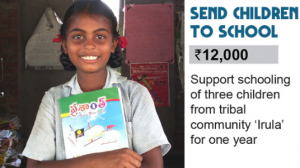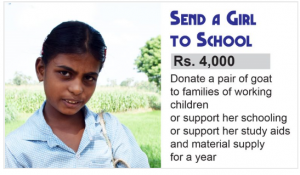- home

- Publication & Resources

- Blog
- Bonded Children Of Labour Minus Childhood

Bonded Children Of Labour Minus Childhood
CASA Reporter ISHA BANERJEE pens down intricate story of a 13-year-old boy from Andhra Pradesh who worked as bonded labour to pay-off her mother’s debt and the exploitation he faced every single day.
What time you reached your work place?
“They gave me a cellphone from which they used to call me every day at 5 AM so that I do not miss or skip my work.” 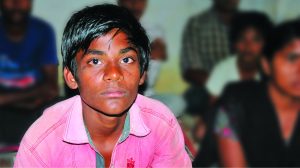
“They” for the 13-year-old Dinesh (name changed) are his landlords from whom his parents had taken Rs 7,000 advanced loan during financial burden in the family; in return of which a member of his family will have to work at the money lender’s house for a whole year to repay the debt. Dinesh started to work at the age of 11 years as his mother went on to find additional income to support his family. He was the only one who could cover his mother’s shift at the landlord’s house.
Debt bondage is the most common form of slavery, sometimes known as bonded labour or debt slavery.
“I had to reach their house by 5 AM. They gave me a mobile phone and I used to set an alarm. There was no prepaid balance in my sim card. So only the lenders could call me up in the morning to wake me up and instructed me to not be late,” the minor said.
So what all work you did at their house?
“My landlord had huge stable which had nearly 15-17 buffalos. I used to take out the buffalos from the hut and tied them somewhere. Afterwards, I used to clean the dung and urine. Basically, I had to clean the entire stable. My work hours were from 5 AM to 6-7 PM. “There were other children in the house of my age. Sometimes they made fun of me. I never reacted, but sometimes I used to get really angry.”
When did you break for meal?
“My mother used to give me some breakfast in the early morning. But other days, I could not eat food as I always used to be in hurry to reach my workplace. The landlord scolded me whenever I reached late. They deduct our daily wage. “They use to give tea around 6.30 AM. The tumbler is not from the kitchen. It is kept in some other place, outside kitchen. They pour the tea from the kitchen window into that tumbler without touching the tumbler. I am not allowed to enter the house premises.”
According to 2011 Census report, 43 lakh Children aged 5-14 in India are engaged in labour works. Alongside, 47 per cent children drop-out from school between class 1-10, as per the same Census Report.
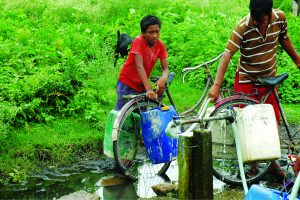
Did you ever get angry at their behaviour?
“Angry? Of course yes. Whenever I became tired and worn-out during work hours, the landlords abused me, used bad words. Even the women in the house spoke to me with the same language. “When I am not able to perfectly clean the dung, then they scold me. Although they have never assaulted me at any moment, they only use the bad words.
“Most of the time, hearing that language, I get angry on them and want to beat them back or abuse them. But if I do so, they will stop supporting our family”
Dinesh was motivated to join CASA Bridge Course Centre but due to the nature of his work he skipped the school every next day. Just recently, CASA volunteers negotiated
with his landlords to allow him to go to school and free him of all bonds. His mother requested the lenders to allow him to attend school. Even though he attends his classes regularly now, Dinesh says that “he goes for work on Sundays” as he wants his mother to take a day’s break for herself.
Nevertheless, the 13-year-old boy has pledged that he will “never” work as a full time worker. “Even if I work as a labourer, I will work as a daily labourer not as a bonded labourer.”
*The Interview was taken by CASA Reporter Isha Banerjee and the name of the boy has been changed keeping in mind his privacy.
Who are bonded Child Labour?
Bonded child labour occurs when children work to repay a debt which may have been incurred by a parent or guardian. This is particularly common in the Indian cotton industry. Parents from impoverished villages, driven by necessity, receive advances or loans from field/factory/land owners in exchange for their child’s labour for a particular duration; this debt is then used as a method of binding child workers and removing their freedom. Sometimes the debt is passed down through generations, inherited from grandparents and forcing entire families into servitude and poverty.
CASA BRIDGE SCHOOL CENTRES
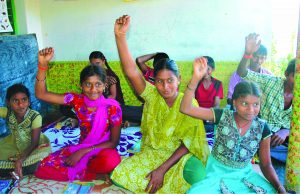
CASA took up Child Labour Free Zone Project (CLFZP) initiative to create an environment and opportunity for children to promote their rights and to restore childhood.
Bridge Course Centres were planned particularly for the school drop outs. The main objective of the bridge course centre is to encourage a child to continue education by creating a positive channel. These centres help children to continue their education in a regular school. Regular follow up is done by the appointed volunteers so that every child – upto
14 years – attends school.
The Bridge course center volunteers prepared 7 children in Andhra Pradesh and 5 in Tamil Nadu for appearing in 10th exam. Parents teacher meetings were conducted where they were motivated to send their children to the bridge course centers regularly.
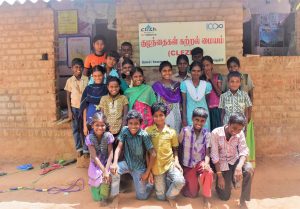 Women and girls were enriched in their skills and developed confidence for better self employment opportunities. Children were provided information on availing loans from the banks and other financial institutions to start their own business centers. By attending the courses at the vocational training centers, the employable skills, social status and
Women and girls were enriched in their skills and developed confidence for better self employment opportunities. Children were provided information on availing loans from the banks and other financial institutions to start their own business centers. By attending the courses at the vocational training centers, the employable skills, social status and
confidence level has increased.
Child Labour Free Zone Project made people aware of the problems related to child labour and integrated livelihood issues. In order to achieve this, network and alliances were built with various organizations.
 Previous Blog Post LAKSHMI: A WALK BACK TO SCHOOL
Previous Blog Post LAKSHMI: A WALK BACK TO SCHOOLFeatured Post

International Women’s Day -2021
8 Mar 2021
International Women’s Day -2021 is very special for CASA. It’s a delight to announce, CASA with the support of the Church of Sweden has launched an exclusive Gender Desk to emphasise the importance of Gender Justice work. CASA has been working for Gender Justice all throughout and across our constituencies in all these years. Gender Desk comes to add vigour […]

Overcoming Gender and Poverty Barriers
Poverty has been an inevitable problem in India since the beginning of time. The increasing problems of poverty caused by overpopulation and the unequal distribution of wealth among the people have led to a huge impact on the life of millions in the rural as well as the urban area. A person has to acquire […]
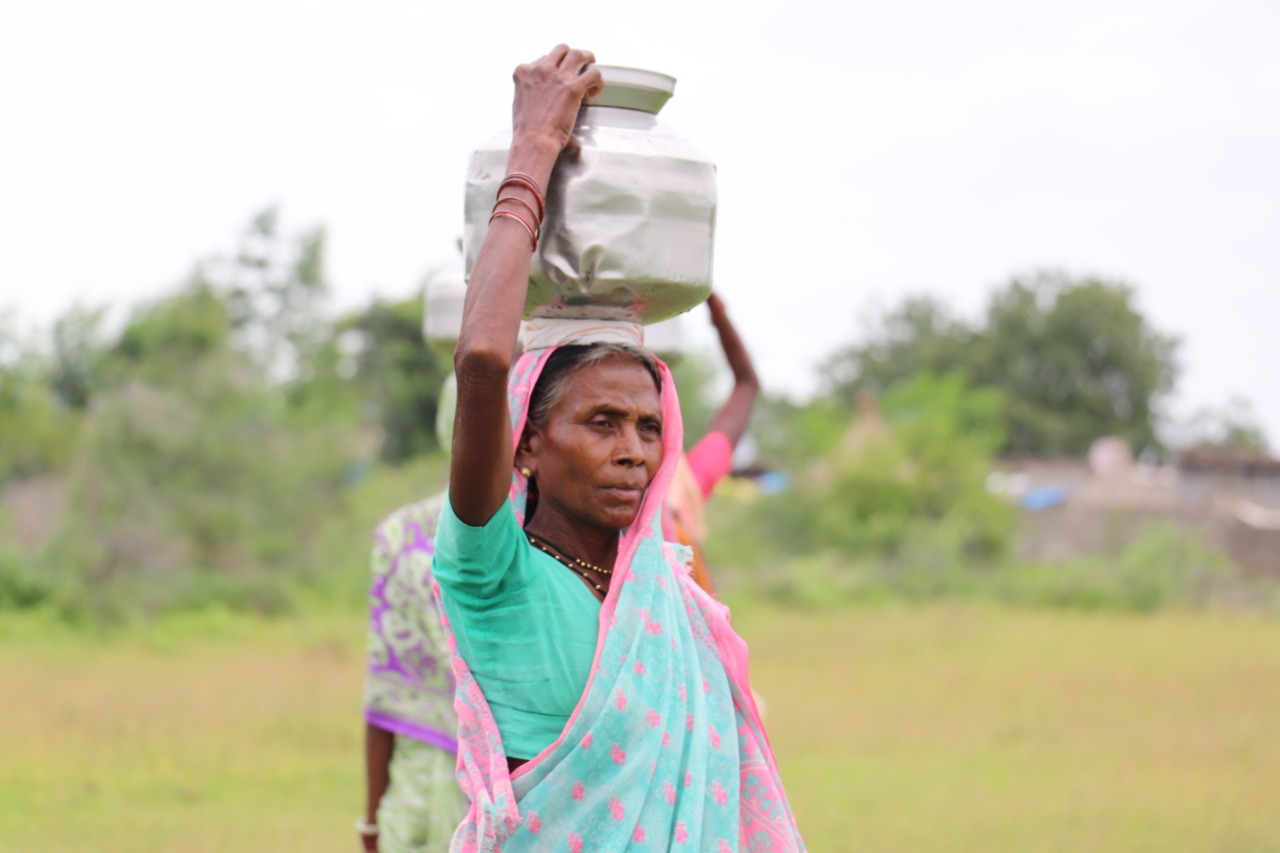
Impact of Climate Change on Women
16 Jan 2021
Climate change is a prevailing problem globally whose hazardous repercussions extend beyond the environment. Shrinking glaciers, extinction of plants and animal species, mutation, rise in the Earth’s average temperature and triggered seasonal fluctuations, are some of the impacts of climate change that have already grabbed the headline. Certain early predictions pertaining to climate changes had […]





